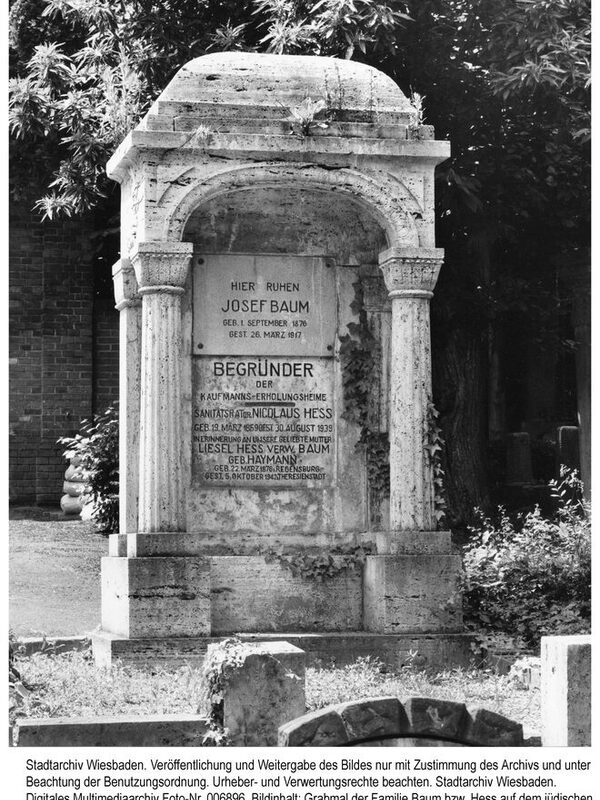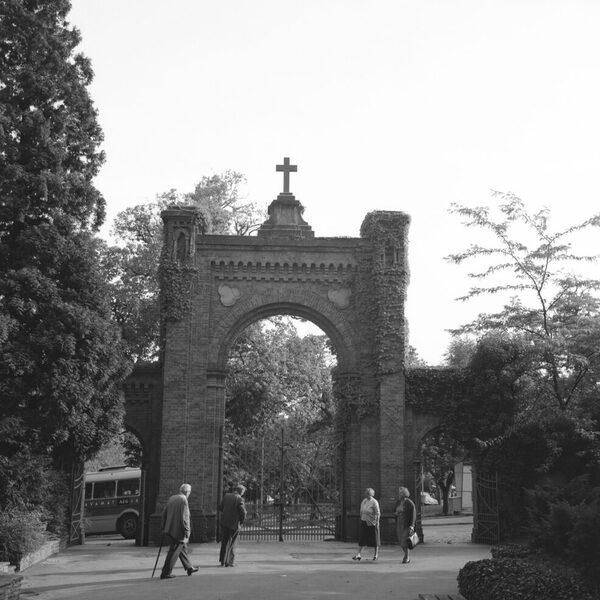Cemeteries
Wiesbaden has a long prehistoric settlement tradition, which has manifested itself primarily in grave finds since the Bronze Age. Prehistoric, Roman and Germanic burial grounds have been found in the Friedrichstrasse, Luisenstrasse and Dotzheimer Strasse areas, on Waldstrasse, on the Hainerberg, the Heidenberg, on the Adolfshöhe and in most of the suburbs.
The city has a total of 21 Christian, seven Jewish and one Russian Orthodox cemetery. A Muslim burial site was inaugurated a few years ago in the southern cemetery.
The oldest cemetery in medieval Wiesbaden, first mentioned in 1248, was located in the middle of the settlement around the Mauritius Church, as was common at the time. It was open to the entire population, while privileged persons could be buried directly in the church, near the relics of the saint, for a fee. There was an ossuary in the cemetery where the skeletal remains were kept. In the early 14th century, it was converted into St. Michael's Chapel. There was also a brotherhood dedicated to St. Michael, which carried the dead to their graves. The only medieval monastery in Wiesbaden, the Klarenthal convent of the Poor Clares, also served as a burial site for a time. Hardly any of the rich tombs have been preserved.
The cemetery at the Mauritius Church was replaced by the "Totenhof an der Heidenmauer" in 1573. This cemetery had to be extended several times: in 1753 it was extended to the height of the Schulberg, in 1821 it was extended again until it finally covered an area of 8,200m2. After 259 years, it was closed in 1832. In 1886, the upper part was converted into a park and opened for general use. In 1900, a large part was sacrificed for the construction of Coulinstrasse, and the graves in this area were transferred to today's Old Cemetery. The venerable burial site suffered further losses in 1902/03 when the Roman Gate was built and the Heidenmauer was breached.
The burial history of Wiesbaden would not be complete without a mention of the cemetery on Kochbrunnenplatz: from 1690 to 1808, the city maintained a special cemetery for the poor and hospitalized here, very close to the hospital. In 1832, for the first time, a site outside of the city's Weichbild area was considered for the construction of a new cemetery, namely on Platter Straße. This new cemetery was consecrated on September 6, 1832 and soon proved to be too small; the first expansion took place in 1851. By 1955, around 27,000 people had found their final resting place here. In 1972, the cemetery was converted into a leisure park.
The later northern cemetery was put into operation in 1877. In 1878, an orthodox and a liberal Israelite cemetery were built on the east and north sides respectively. In 1908, the youngest of Wiesbaden's cemeteries, the southern cemetery, was inaugurated.
Literature
Buschmann, Hans-Georg: The northern cemetery of Wiesbaden and its predecessors. History, burial customs and rites, grave monuments. Wiesbadener Stadt- und hessische Landesgeschichte, Frankfurt am Main [u.a.] 1991.
Sigrid Russ, editor, Denkmaltopographie Bundesrepublik Deutschland. Cultural monuments in Hesse. Wiesbaden II - The villa areas. Ed.: Landesamt für Denkmalpflege Hessen, 2nd revised edition, Stuttgart 1996 [pp. 582-596].
Schüler, Martina (ed.): 100 Jahre Südfriedhof 1908-2008. ed.: Magistrat der Landeshauptstadt Wiesbaden - Amt für Grünflächen, Landwirtschaft und Forsten, Wiesbaden 2008.
Werschewskaja, Marina: Graves tell history. The Russian Orthodox Church of St. Elisabeth and its cemetery in Wiesbaden, Wiesbaden 2007.

